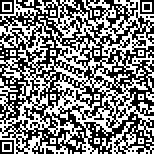下载中心
优秀审稿专家
优秀论文
相关链接
摘要

超分辨率制图SRM(Super-resolution Mapping)技术可以有效地处理遥感图像中的混合像元,获得准确的地物类别分布信息。目前,SRM技术已经成功地应用于多光谱图像洪水淹没定位中,称为超分辨率洪水淹没制图SRFIM(Super-resolution Flood Inundation Mapping)。然而,现有的SRFIM方法往往基于像元尺度空间相关性,这种空间相关性考虑设定的矩形窗内的像元之间的空间关系,但实际情况下淹没区域与非淹没区域的形状是不规则的,因此这种像元尺度空间相关性不够准确,影响最终的洪水淹没制图精度。为了解决这一问题,提出了超像元尺度空间相关性下的多光谱图像超分辨率洪水淹没制图SSSC-SRFIM(Super-resolution Flood Inundation Mapping for Multispectral Image Based on Super-pixel Scale Spatial Correlation)。在SSSC-SRFIM中,首先利用双立方插值改善原始粗糙多光谱图像,获得改善后的图像,并利用光谱解混方法对改善后的图像进行光谱解混,获得具有每个亚像元属于淹没类别概率值的丰度图像;然后利用主成分分析法提取改善后图像的第一主成分,并利用基于多分辨率的图像分割算法分割第一主成分,获得不规则形状的超像元;再者将丰度图像与超像元进行整合计算,并引入随机游走算法计算各个超像元之间的空间相关性;最后,依据超像元空间相关性,利用基于类别单元的类别方法将淹没区域或非淹没区域标签分配给每个亚像元中,得到最终的洪水淹没制图结果。利用两个Landsat 8 OLI多光谱图像对该方法进行了评价。结果表明,与传统的SRFIM方法相比,本文提出的SSSC-SRFIM方法具有更好的效果。
Super Resolution Mapping (SRM) technology can effectively handle mixed pixels in remote sensing image and obtain the accurate distribution information of land-cover class. SRM technology is currently successfully applied to flood inundation mapping for multispectral image, which is called Super Resolution Flood Inundation Mapping (SRFIM). However, the existing SRFIM methods are often based on pixel-scale spatial correlation. This method considers the spatial relationship between pixels in the set rectangular window, but the shape of the inundation area or the non-inundation area is irregular in reality. Thus, the pixel-scale spatial correlation is insufficiently accurate, which affects the final accuracy of flood inundation mapping. Super-resolution flood inundation mapping of multispectral image based on super-pixel scale spatial correlation (SSSC-SRFIM) is proposed to solve the abovementioned problem.In SSSC-SRFIM, the original coarse multispectral image is first improved by bicubic interpolation to obtain the improved image, and the fractional image with the proportion value of each subpixel belonging to inundation area is obtained by unmixing the improved image. The first principal component of the improved image is then extracted by principal component analysis, and the image segmentation based on multi-resolution is used to segment the first principal component to obtain the super-pixels with irregular shape. Next, the fractional image and super-pixels are integrated, and the random walk algorithm is introduced to calculate the super-pixel-scale spatial correlation. Finally, according to the super-pixel-scale spatial correlation, the label of the inundation area or the non-inundation area is assigned to each sub-pixel by the class allocation method based on the unit of object. Thus, the final result of flood inundation mapping is produced.Two Landsat 8 OLI multispectral images are used to evaluate the method. The proposed SSSC-SRFIM method has better performance than the traditional methods.In the proposed SSSC-SRFIM, the super-pixel-scale spatial correlation is more accurate than pixel-scale spatial correlation because the irregular distribution shape of the actual inundation and non-inundation areas is considered. Therefore, better flood inundation mapping result can be obtained by the proposed SSSC-SRFIM.

